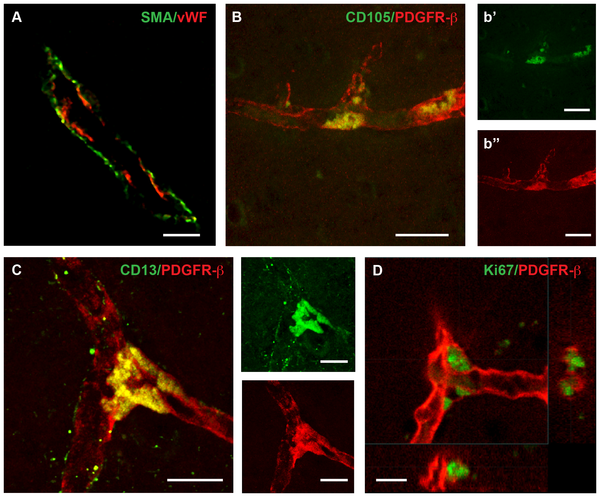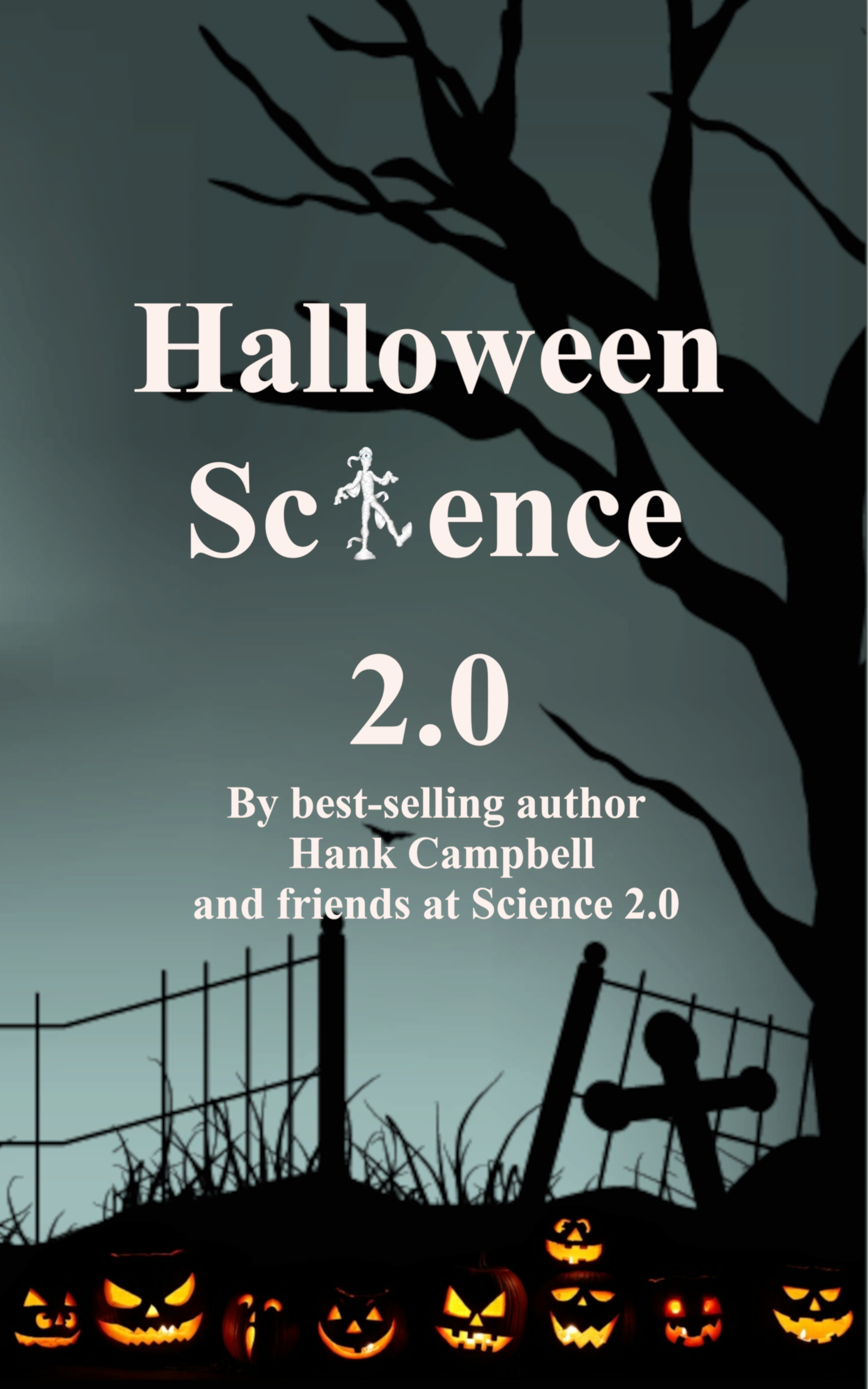Analyzing brain tissue from biopsies, the researchers for the first time found stem cells located
around small blood vessels in the brain. The cell’s specific function is still unclear, but its plastic properties suggest great potential. A similar cell type has been identified in several other organs where it can promote regeneration of muscle, bone, cartilage and adipose tissue.
In other organs, researchers have shown clear evidence that these types of cells contribute to repair and wound healing. Scientists suggest that the curative properties may also apply to the brain. The next step is to try to control and enhance stem cell self-healing properties with the aim of carrying out therapies targeted to a specific area of the brain.

The adult human brain contains perivascular cells co-expressing mesenchymal stem cell and pericyte markers. (A) Confocal image showing neocortical brain section with intracerebral capillary with endothelial cells on the luminal side of the blood vessel (vWF, red) surrounded by α-SMA-positive cells (green). Scale bar 100 µm. (B) Capillaries are lined with pericytes expressing PDGFR-β/CD140b (red) whereby a proportion double labeled for the MSC markers CD 105 (green) and (C) CD13 (green). Scale bar 25 µm (B) and 17 µm (C). (D) PDGFR-β-positive cells at vessel branching points stain for Ki67 (green). Scale bar 10 µm. doi:info:doi/10.1371/journal.pone.0035577.g001
“Our findings show that the cell capacity is much larger than we originally thought, and that
these cells are very versatile,” said Gesine Paul-Visse, Ph.D., Associate Professor of Neuroscience at Lund University. “Most interesting is their ability to form neuronal cells, but they can also be developed for other cell types. The results contribute to better understanding of how brain cell plasticity works and opens up new opportunities to exploit these very features.”
The study is of interest to a broad spectrum of brain research. Future possible therapeutic targets range from neurodegenerative diseases to stroke.
“We hope that our findings may lead to a new and better understanding of the brain's own repair mechanisms,” said Paul-Visse. “Ultimately the goal is to strengthen these mechanisms and
develop new treatments that can repair the diseased brain.”
Citation: Paul G, Özen I, Christophersen NS, Reinbothe T, Bengzon J, et al. (2012) The Adult Human Brain Harbors Multipotent Perivascular Mesenchymal Stem Cells. PLoS ONE 7(4): e35577. doi:10.1371/journal.pone.0035577





Comments